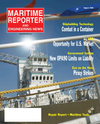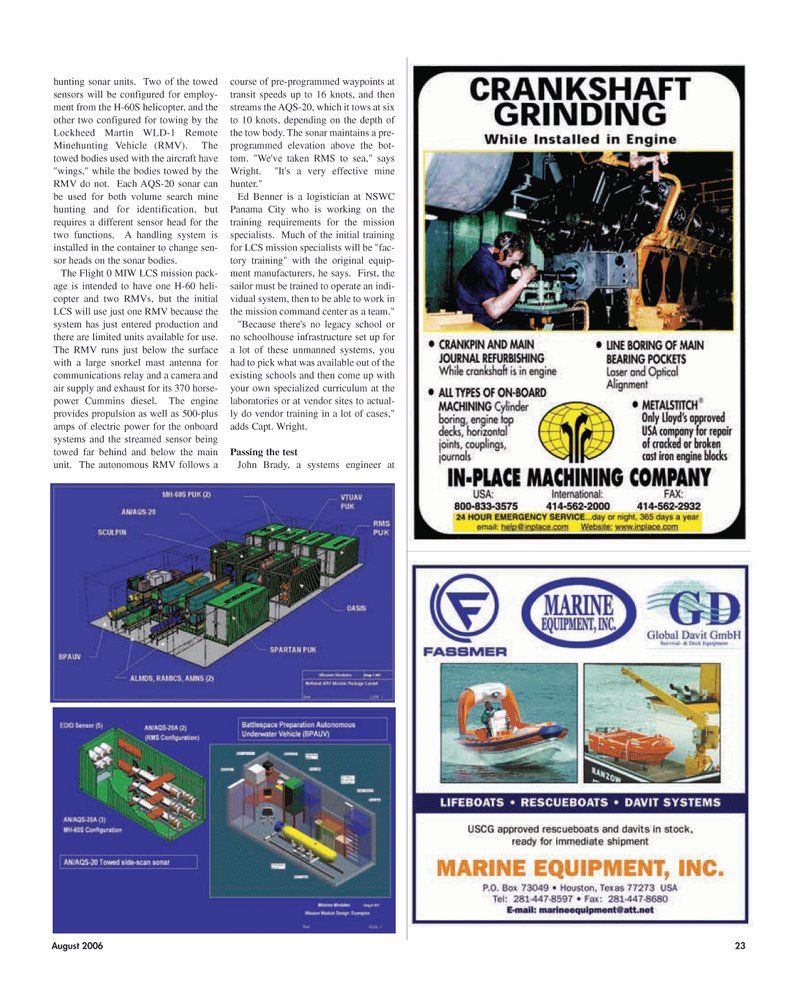
Page 23: of Maritime Reporter Magazine (August 2006)
AWO Edition: Inland & Offshore Waterways
Read this page in Pdf, Flash or Html5 edition of August 2006 Maritime Reporter Magazine
August 2006 23 hunting sonar units. Two of the towed sensors will be configured for employ- ment from the H-60S helicopter, and the other two configured for towing by the
Lockheed Martin WLD-1 Remote
Minehunting Vehicle (RMV). The towed bodies used with the aircraft have "wings," while the bodies towed by the
RMV do not. Each AQS-20 sonar can be used for both volume search mine hunting and for identification, but requires a different sensor head for the two functions. A handling system is installed in the container to change sen- sor heads on the sonar bodies.
The Flight 0 MIW LCS mission pack- age is intended to have one H-60 heli- copter and two RMVs, but the initial
LCS will use just one RMV because the system has just entered production and there are limited units available for use.
The RMV runs just below the surface with a large snorkel mast antenna for communications relay and a camera and air supply and exhaust for its 370 horse- power Cummins diesel. The engine provides propulsion as well as 500-plus amps of electric power for the onboard systems and the streamed sensor being towed far behind and below the main unit. The autonomous RMV follows a course of pre-programmed waypoints at transit speeds up to 16 knots, and then streams the AQS-20, which it tows at six to 10 knots, depending on the depth of the tow body. The sonar maintains a pre- programmed elevation above the bot- tom. "We've taken RMS to sea," says
Wright. "It's a very effective mine hunter."
Ed Benner is a logistician at NSWC
Panama City who is working on the training requirements for the mission specialists. Much of the initial training for LCS mission specialists will be "fac- tory training" with the original equip- ment manufacturers, he says. First, the sailor must be trained to operate an indi- vidual system, then to be able to work in the mission command center as a team." "Because there's no legacy school or no schoolhouse infrastructure set up for a lot of these unmanned systems, you had to pick what was available out of the existing schools and then come up with your own specialized curriculum at the laboratories or at vendor sites to actual- ly do vendor training in a lot of cases," adds Capt. Wright.
Passing the test
John Brady, a systems engineer at
MR AUGUST2006 #3 (17-24).qxd 8/2/2006 5:27 PM Page 23

 22
22

 24
24
